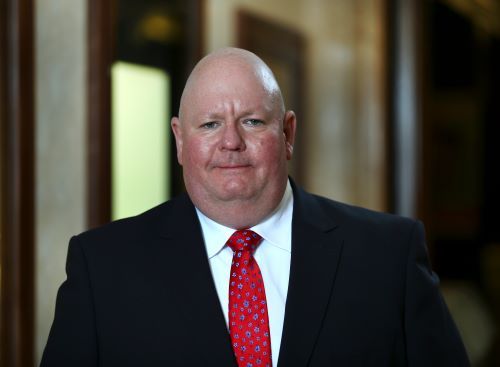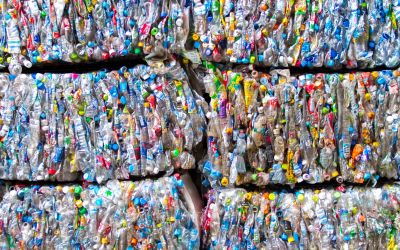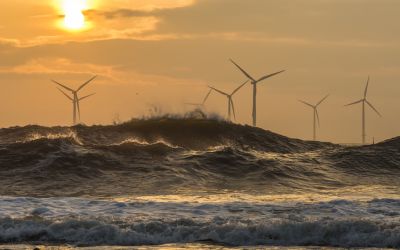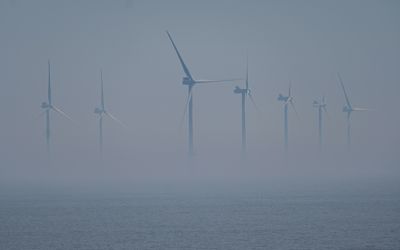Detlef Glow on long term implications of SFDR regulation
Detlef Glow, Head of Refinitiv Lipper EMEA Research, from London Stock Exchange Group talks to Climate Action about long term implications of SFDR regulation, whether investors should use them when making fund selections and how far the regulations have gone to eradicate greenwashing.

Detlef Glow, Head of Refinitiv Lipper EMEA Research, from London Stock Exchange Group talks to Climate Action about long term implications of the EU’s Sustainable Finance Disclosure Regulation, whether investors should use them when making fund selections and how far the regulations have gone to eradicate greenwashing.
Can you explain the SFDR article classifications and current requirements for investment fund managers?
Article 6 covers funds which do not integrate any kind of sustainability into the investment process and could include stocks currently excluded by ESG funds such as tobacco companies or thermal coal producers. While these will be allowed to continue to be sold in the EU, provided they are clearly labelled as non-sustainable, they may face considerable marketing difficulties when matched against more sustainable funds.
Products classified as article 8 funds promote, among other characteristics, environmental or social characteristics, or a combination of those characteristics, provided that the companies in which the investments are made follow good governance practices. Since article 8 products ‘only’ need to promote environmental and/or social characteristics, these products have been labelled as ‘light green’ by investors and market observers.
Article 9 covers products targeting bespoke sustainable investments and applies “… where a financial product has sustainable investment as its objective and an index has been designated as a reference benchmark.” Article 9 funds need to specify in pre-contractual disclosures how they will attain such objective and how they ensure investments ‘do no significant harm’. These products have been labelled as ‘dark green’ by investors and market observers.
There are effectively three ways to define “sustainable investment” under article 9:
I an environmental objective, as covered by the EU Taxonomy
ii an environmental objective that falls outside the Taxonomy, where asset managers can define the environmental objective as they see fit
iii or a social objective, defined as the asset managers see fit, given a social Taxonomy is not yet finalized.
Every article has its own reporting and disclosure requirements, which is intended to prevent greenwashing and shall help investors to identify those funds and ETFs that suite their needs best.
What are the immediate and likely long term implications of SFDR regulations on EU and Non EU fund managers?
The SFDR will have multiple implications for asset managers and corporations inside and outside the EU, as every fund management company that wants to distribute their products to EU investors needs to be compliant with the regulation. This also includes the respective reporting duties. As a result, also companies from outside the EU that wish to attract capital (via mutual funds or ETFs) from EU investors will have to report the respective data and key performance indicators (KPIs) to the fund management companies, as SFDR also applies to investments outside the EU.
In addition, fund management companies will have to review the whole lifecycle of products, from the initial product development and marketing, through to monitoring and reporting, updating policies and processes accordingly. To fulfil the assessment and reporting requirements of the respective SFDR articles, fund management companies will need to develop processes to gather and store relevant data and other information. Finally, there is a need to implement a risk management policy and framework that covers ESG and SFDR within the business, ensuring that this is updated to reflect ever-evolving sustainability reporting requirements, and that risk metrics are reviewed regularly at the fund and investment level.
SFDR will therefore increase the transparency of investment products with regard to the incorporation of ESG criteria and the resulting impact. Unfortunately, there is no global standard for this kind of reporting, so that the fund management companies cannot use standardized corporate reporting and data to evaluate their investments. I am pretty sure that this will change over time, as we are witnessing similar initiatives from regulators around the globe. The launch of the ISSB will also help to standardize sustainable data and reporting.
Should investors use SFDR for fund selection?
The SFDR is not designed to be a selection tool for fund selectors and investors. In addition, ESMA stated that the fund promoter shall not use SFDR as a marketing tool. Nevertheless, it looks like fund selectors and investors are using the SFDR classifications at least partly within their fund selection process.
More generally speaking, SFDR sets minimum standards that may help to prevent greenwashing, as fund promoters are forced to report on their ESG credentials, as well as (under article 9) on the ‘do no significant harm’ outcome of their investments. This means the respective fund documents can be used to assist the fund selection process. Fund selection only based on the classification of a product can be misleading, as the classification by article 6, 8 or 9 does not tell the investor how ESG criteria and factors are integrated in the portfolio management process and what impact the portfolio has, with regard to its environmental or social performance.
Although there remains some complexities around SFDR, do you think that it will eventually become the industry gold standard?
Given the fact that there will be a global standard in the foreseeable future, SFDR is a good starting point and I hope that the ISSB will use the requirements from regulators around the globe as a starting point and harmonize the respective data requirements for a comprehensive mandatory ESG reporting standard. Given the fact that all market participants are somewhat unsure what they need to do to fulfil the SFDR standards and how the classification can be used by investors, I wouldn’t say that SFDR and the respective reporting duties are currently the gold standard, but the EU Taxonomy and SFDR have ambiguous goals and I believe that both have the potential to become lighthouse projects once they are under full steam and the mistakes from the early days have been eliminated.
Why do SFDR labelled funds vary significantly across Europe and what problems can this pose for both asset managers and investors?
The fund market in the EU is not a single market and local regulators can add additional regulatory requirements (for ESG disclosures and other topics) for funds and asset managers domiciled in the respective country. The EU regulations do only set the minimum standards which can’t be lowered by local regulators. With regard to this, one need to bear in mind is that increased regulatory requirements are often seen as competitive disadvantage by local asset managers, since products domiciled in countries with minimum regulatory requirements can still be sold in countries with higher regulatory requirements under the so-called UCITS fund passport.
From my point of view, this so-called regulatory arbitrage was one of the reasons why the German regulator Baffin pulled back on the attempt to implement higher ESG standards as a result of the inclusion of nuclear power as “green technology” within the EU taxonomy as this kind of regulation would have been a disadvantage for funds domiciled in Germany, compared to other EU fund domiciles.
In addition to this, countries outside the EU may have totally different standards with regard to ESG-related investments, as they are not linked to any EU regulation, as long as the local markets are concerned.
Do you think the lack of clarity around what constitutes an Article 8 fund could potentially increase greenwashing?
Greenwashing could potentially happen under article 8 and 9. I assume that we will see a number of reclassifications from 8 to 6 and 9 to 8 once the funds need to fulfil the reporting duties, since the reporting will show which fund will actually fulfil the investor demand. Even as some fund managers may play around with the classifications, I am pretty sure that regulators will have a deeper look into the funds classified by article 8 or 9 and penalize those who will use misleading terms or do greenwashing. I also believe that the EU regulators will review SFDR and may add additional duties to determine in more detail what a fund has to fulfil to be classified as article 8.
A year on how has the landscape changed with assets under management and fund flows in SFDR classifications?
We are already witnessing that investors prefer article 9 funds over article 8 funds. From my point of view this trend is driven by the fact that investors want to avoid any possible greenwashing allegations. In addition, investors might want to assure that they still invest in a “light green” fund, if the respective products gets reclassified. I think that this trend will continue, as investors have understood that only article 9 funds will contribute to the overall.
How sustainable are sustainable funds and will SFDR give greater ESG clarity for investors?
The question how sustainable ‘sustainable’ funds are can’t be answered in general, only from the viewpoint of the investor and the fund promoter. This means some investors may think that a respective fund is doing greenwashing, while others classify the same fund as sustainable. Nevertheless, the reporting duties for funds under article 8 or 9 should help investors to identify funds that suit their needs best. Therefore, I strongly believe that SFDR will increase the transparency with regard to the implemented ESG-criteria and the resulting environmental and/or social performance of the respective funds





